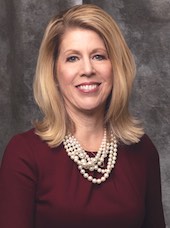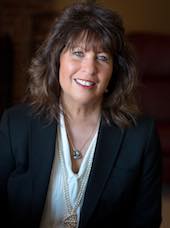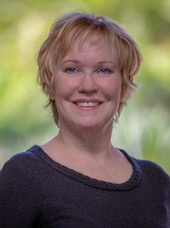Social capital also refers to so-called “soft skills,” encompassing such attributes as temperament, relatability and values. “Values are especially important because they help the board determine when considering individuals for board seats whether there’s a good cultural fit,” Herbert says. “A best practice is to strive to have diverse professional and social capital that will best serve the future needs of the credit union, and gender diversity is an essential part of that.”
With women well-represented on its board, Guadalupe CU has achieved a balance of professional and social capital. When recruiting new board members, the credit union looks for individuals who can help maintain that balance.
“We look for such things as enthusiasm and also if they have a specific talent in HR, IT or other areas in which we’re in need of expertise,” Medina explains.
Guadalupe CU maintains its social capital not only by recruiting women but also by recruiting young people. According to Medina, recruiting board members from among millennials and Gen-Xers helps ensure a continuing infusion of fresh ideas.
Mistake #4: They don’t conduct a broad enough search.
According to the Rotman report, credit unions mostly rely on word-of-mouth from current directors and staff to recruit board candidates and/or draw candidates from non-board committees. These recruitment practices typically lead to selecting new directors who are similar to incumbents. On boards that are mostly male, this hampers the movement toward greater gender diversity.
To aid in the quest for diversity, Herbert recommends that boards assess the types of professional and social capital that would best serve their credit unions and design a recruitment plan using that as a base. It is also possible to seek out a combination of diversity markers in board candidates, such as gender, age and ethnicity. “This mostly entails a shift from board members co-opting friends and colleagues to seeking out the specific attributes you need and knowing where to find them,” she says.
Gabriel says her board has done a lot of work on its director recruitment process. Beyond leveraging term limits, her directors “are thinking strategically and made a decision to move beyond finding new board members the old way—like asking people they know to find out if a friend or acquaintance would be interested in being a board member.”
At Guadalupe CU, recruitment of new board members focuses on values. “Basically what we’ve done is recruited from our partner organizations, because they have similar values,” Medina says. Among these partner organizations are Somos Un Pueblo Unido, a state-wide community organization working in support of the Hispanic community, and the New Mexico Association of Government Accountants, which serves professionals in the government financial community by providing quality education and fostering professional development.
Guadalupe CU also spreads the word about board openings through online advertising and direct contact with members during branch visits.
“The [member service representatives] will strike up a conversation and ask them if they would like to apply,” Medina reports.
In fact, it was through an in-branch conversation that Medina herself was recruited to serve as a credit union volunteer approximately 25 years ago.
To avoid pitfalls in recruiting, Deedee Myers, Ph.D., MSC, PCC, CEO of CUESolutions provider DDJ Myers Ltd., Phoenix, recommends that boards do not self-recruit but rather leave the search process to the experts.
“Insist on a diverse pool of candidates,” Myers advises. “Your search firm should already be in the practice of diversity, equity and inclusion.”






